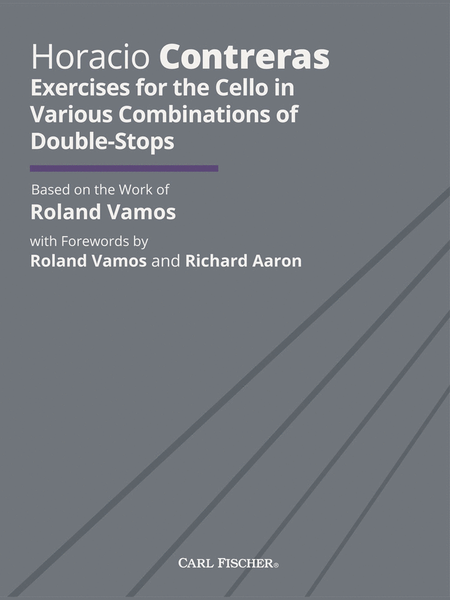Exercises for the Cello in Various Combinations of Double-Stops
-
Ships in 1 to 2 weeks
Details
Description
SKU: CF.BF126
Composed by Roland Vamos. Edited by Horacio Contreras. SWS. Book. With Standard notation. 64 pages. Carl Fischer Music #BF126. Published by Carl Fischer Music (CF.BF126).ISBN 9781491150009. UPC: 680160907502. 9x12 inches.
Written by world renown pedagogue, Roland Vamos, this collection of double-stop exercises fill a void in the literature of technical exercises for cellists. These etudes feature a systematic series of fixed double-stops that enables the player to practice and master every possible combination of finger patterns across two strings without shifting. Mr. Vamos says of the book, "The most important accomplishment is the development of a strong left handà These exercises, when practiced slowly and carefully, will help to develop a keen sense of pitch and intonation." Adapted for cello by Horacio Contreras, teacher, chamber musician, and recitalist.
When I first became familiar with Roland Vamos’ Exercises, I was impressed with itsclarity and effectiveness. The book focuses on a few important fundamentals of string playing,and it is accessible to students of every age. Moreover, its tonal organization in C major makesit simple and easy to understand. I recognized the potential this book could have for cellists,and after spending several months working on an adaptation, I witnessed its results in buildingand maintaining important fundamentals of technique.Mr. Vamos’ Exercises is comprised of simple patterns of double-stops in sevenpositions. There are two basic groups of variations: seven double-stop variations in differentcombined rhythms that develop finger coordination and independence of the left hand, andnine bowing variations that use détaché at the frog, middle and tip of the bow to work onstring crossings, coordination, and balance of the bow. The whole work provides training thatimproves intonation, sound, and ease of playing in all positions and all parts of the bow.In order to adapt Mr. Vamos’ book for cello, I needed to make some modifications tothe original. To address the different needs of the neck and the thumb positions, I chose to writetwo separate books. I kept the original ascending stepwise motion for subsequent variationsin Book I by following a diatonic scale on the top line of the patterns. However, I modifiedthe tonal framework to adjust to the more limited range of the cello. Therefore, unlike in Mr.Vamos’ book, variations in Book I do not ascend through the positions in a uniform pattern.I also switched the order of patterns to create a gradual increase in difficulty. In Book II, Iadded options that work on the fourth finger and an extended left hand frame, and at the end, Iincluded five sets of variations with different bowing alternatives.Mr. Vamos provides a number of specific instructions regarding left hand techniquein his exercises. For his original version, two fingers must remain down for almost the entireset of variations, providing a solid reference for the frame of the hand. In variations H and I,he instructs students to lift these fingers when they are not being used. In the case of thumbposition on cello, lifting the thumb could make the hand unstable; therefore, I suggested thatthe thumb remains down while the other fingers are lifted alternately in H and I. I have foundthis exercise quite useful to work on thumb independence and relaxing the thumb while usingother fingers.Mr. Vamos gives precise instructions for the bowing exercises as well. Following hisdirections, the exercises should be performed with a relaxed hand and flexible fingers. Thenotes should be consistently connected even when crossing strings. The bowing patterns shouldbe performed at the frog, the middle and the tip of the bow in every position.

 Share
Share